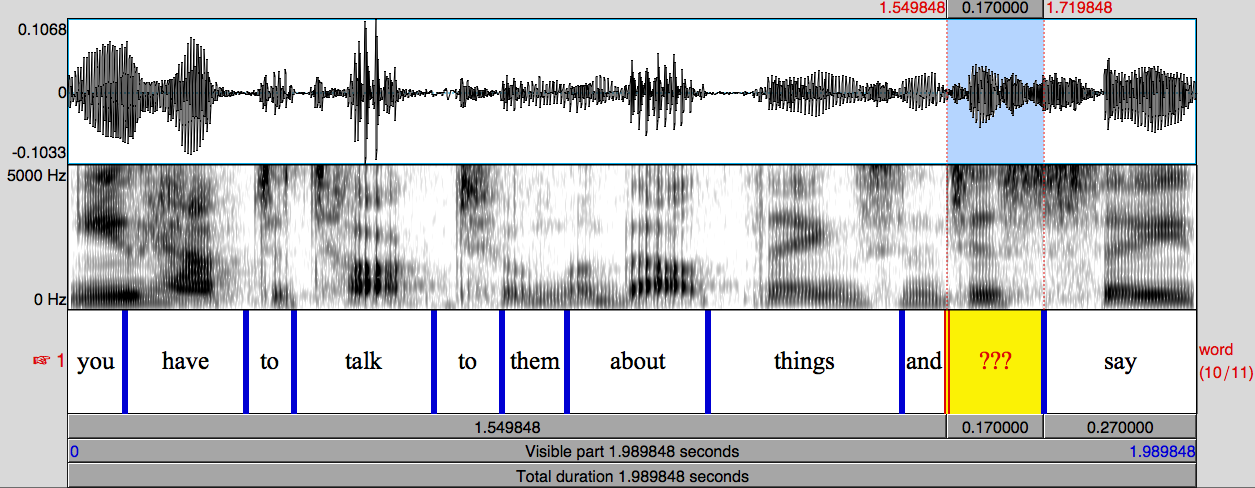

They’re saved in these variable names so we can call upon them later on in the script when we need to.
#PRAAT SCRIPTING MEASURE VOWEL LENGTH CODE#
The end result of these two lines of code is that Praat now has the names of the two files you highlighted. The second line does the exact same thing, but it looks saves the name of the TextGrid instead. My Sound file is called “19-Kathleen”, so now the variable thisSound$ contains the string “ 19-Kathleen”. The dollar sign at the end of that variable name means that the variable contains text rather than a number (in computer circles, text is often called “strings,” as in a string of characters). This name is then stored in a variable called thisSound$. What the first line does is it tells Praat to look at whatever Sound file is selected and extract its name. First off, it doesn’t even know what files to work with! We can tell it to work with the Sound and TextGrid files that are already loaded by putting in these lines of code into your Praat script: thisSound$ = selected$( "Sound") Now we “just” need to translate that into Praat’s scripting language.īefore we can do any of that, Praat needs to figure out a few things. Save those formants into some file so I can use it later (in R or something).Extract formant measurements at that midpoint.Go through each phoneme in the TextGrid.To accomplish this task, tere are the steps I’ll take: The goal is to turn this phoneme-level transcription and accompanying audio into a spreadsheet of formants. Let’s pause for a second and think about what the script is going to do. Once you’ve done that create a script by going to Praat > New Praat Script.Ī blank window should open up for you to write your script in. Note that if you want to extract formants via script, you should load it in as a Sound file and not as a LongSound. There are ways to load files in automatically through scripting-which is useful if you need to process many files-but we’ll keep it simple for now.

To get started, open Praat and load your Sound file and TextGrid. Within each code block, new content is highlighted in blue. In your script, you probably won’t see that color. I’m going to assume you’ve used DARLA or FAVE to process your files so your files should look similar to at least the first two tiers of mine, though the script we will write will work regardless of how your TextGrid is formatted.įinally, please note that the Praat scripts in this document will have syntax highlighting, which means certain parts of the script will be colored depending on its function and whether I’m highlighting it or not. The important part to note is that I have the word-level transcription in the second tier, and a phoneme-level transcription-in ARPABET-in the first tier. I did the word-level transcription by hand (including boundaries) and then I sent it off to DARLA for forced alignment. Specifically, I’ll be using the 19-Kathleen.wav and 19-Kathleen.TextGrid files, which is a 1-minute clip of someone telling about Mount St. Helens.
#PRAAT SCRIPTING MEASURE VOWEL LENGTH DOWNLOAD#
It’s not a perfect script and there are always ways to improve it, but this should be enough to get you started.įor audio, you are of course free to use whichever files you want, but you can download data that will be used in this workshop at /data/sample_audio.zip. By the end of the hour, you should have a working script that extracts F1, F2, and F3 measurements at the midpoints of all your (vowel) phonemes and exports that information to an external spreadsheet. Today’s workshop is focused on formant extraction.


 0 kommentar(er)
0 kommentar(er)
